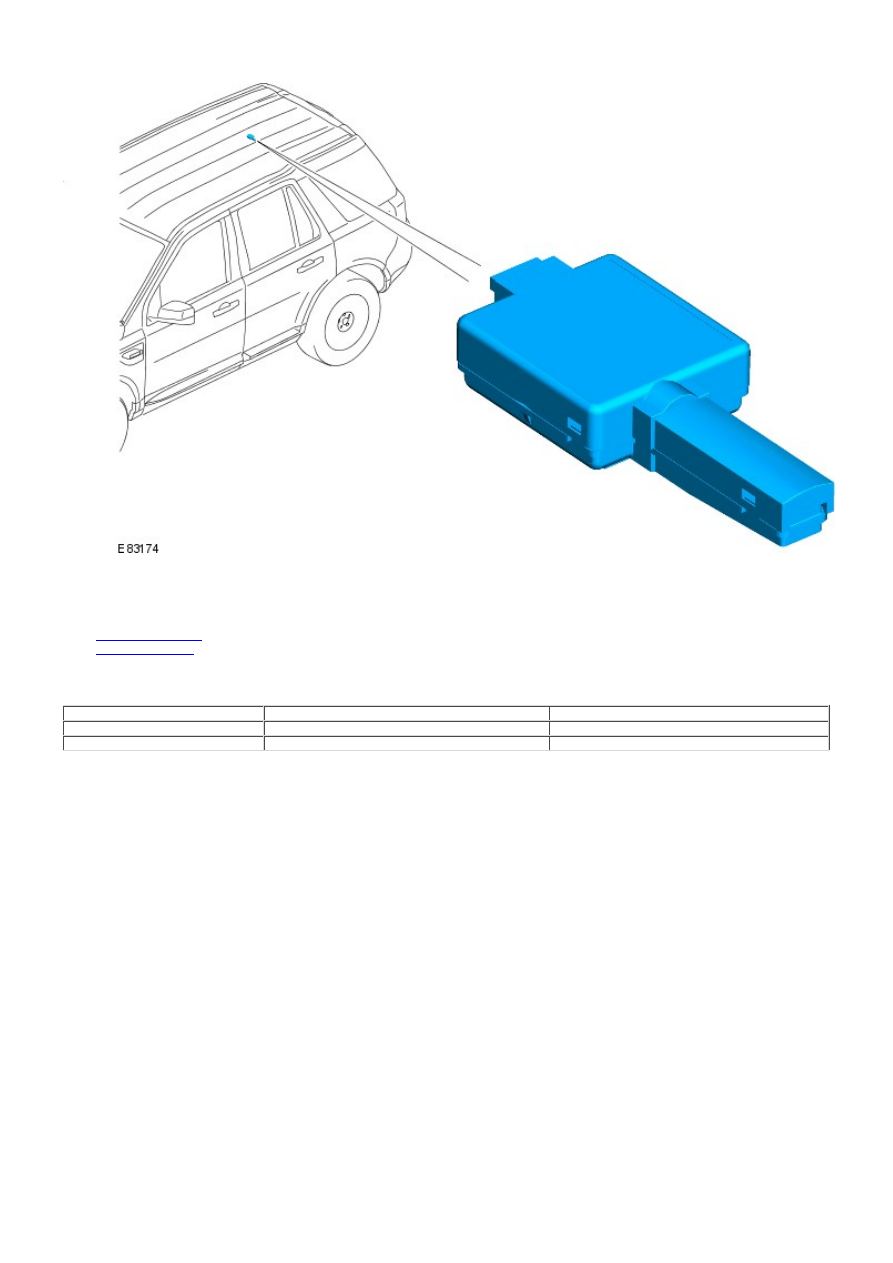Frelander 2. Manual - part 579

RF Receiver
The RF receiver is installed above the headlining, adjacent to the rear interior light. The receiver provides functionality for
the remote central locking system, and is also used by the tire pressure monitoring system and interior lighting function.
For additional information, refer to:
Wheels and Tires
(204-04 Wheels and Tires, Description and Operation),
Interior Lighting
(417-02 Interior Lighting, Description and Operation).
The RF receiver is identical for all vehicle specifications, but differs in the preset frequency that the receiver operates. The
RF receiver for each vehicle specification is identified by a suffix change to the base part number as follows:
Part No. Suffix
Operating Frequency
Vehicle Specification
A#
433 MHz
Europe and ROW
C#
315 MHz
NAS, Japan and Korea
The RF receiver converts the signals transmitted by the remote handset into digital messages, and then transmits the
message via the LIN bus to the CJB.
A permanent power feed is supplied to the RF receiver by the CJB.
Front Door Central Locking Button
Both the front door interior locking buttons will activate the central locking function. When a front door central locking
button is pressed/pulled, all the vehicle doors will centrally lock/unlock.
When a front door central locking button is pressed/pulled, the door control module on the activated door transmits the
central lock/unlock request to the CJB. The CJB then transmits the central lock/unlock command to all the vehicle door
control modules to lock/unlock all the vehicle doors.
The central locking feature using the front door central locking button is inhibited if either of the front doors is ajar. If a
front door is ajar when a front door central locking button is pressed to lock the doors, the doors will lock and then instantly
unlock.
Instrument Panel Central Locking Switches